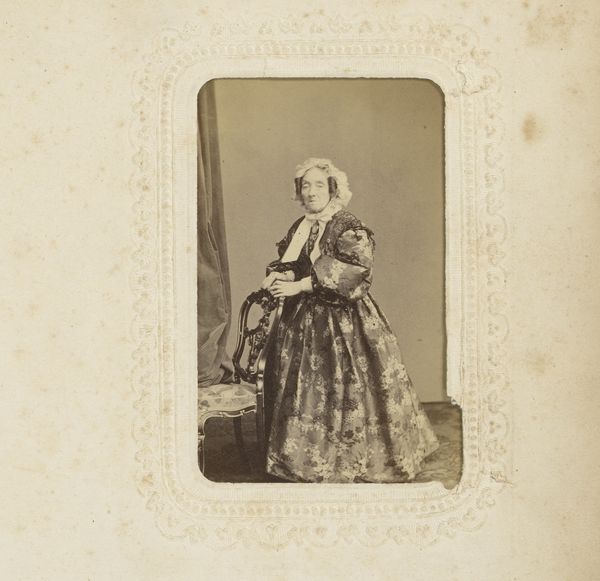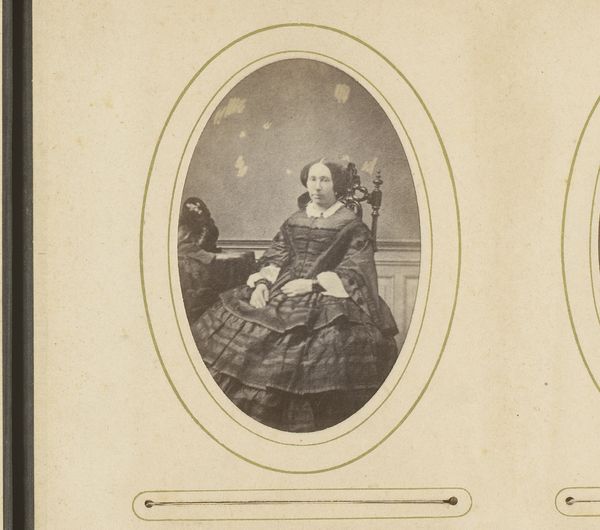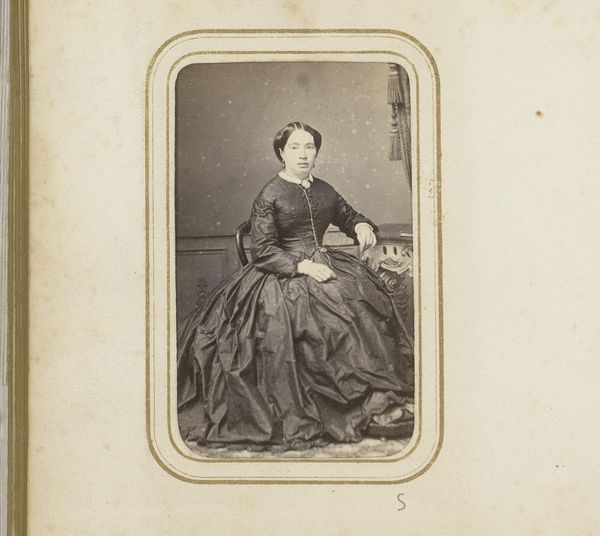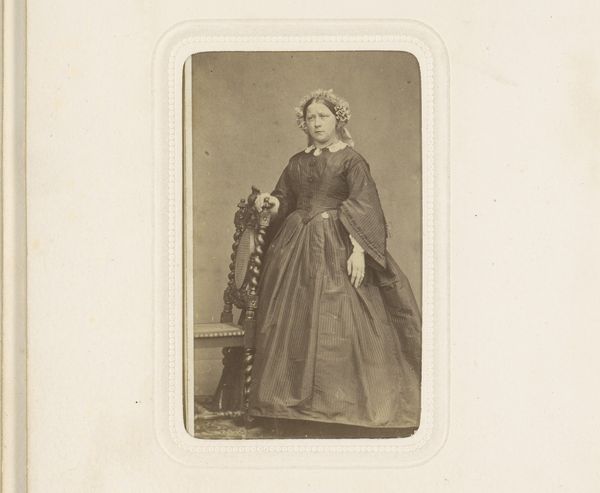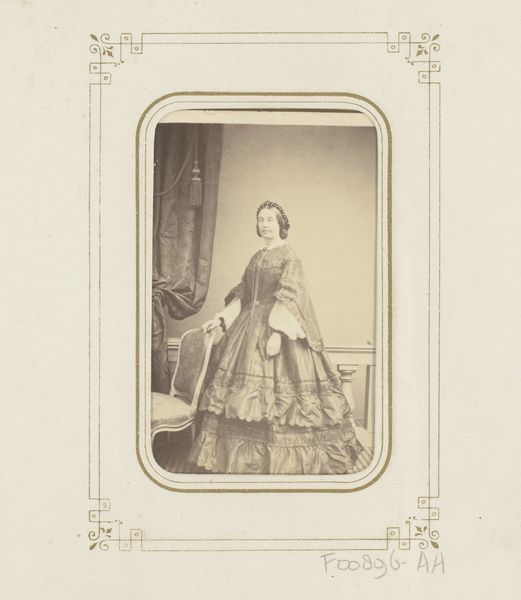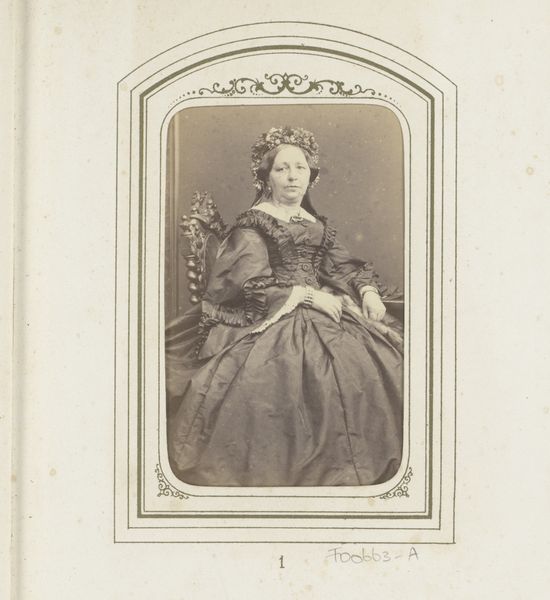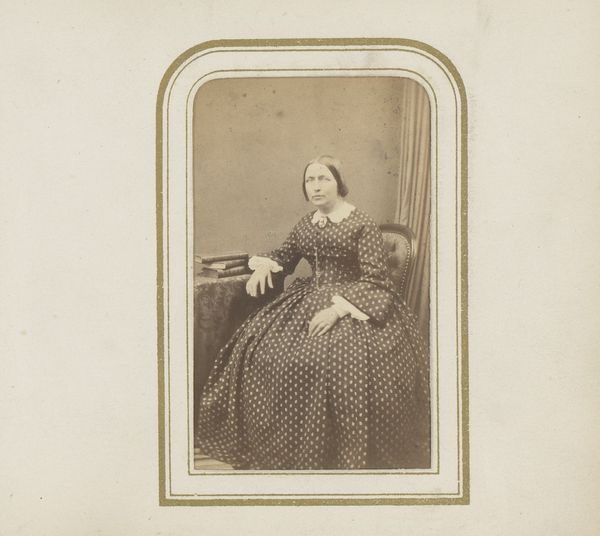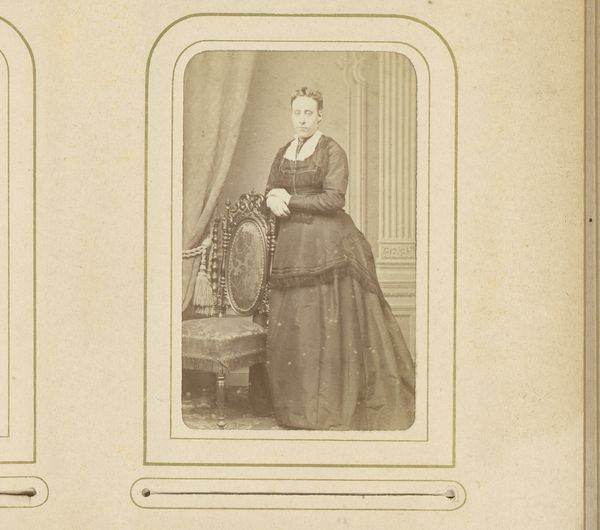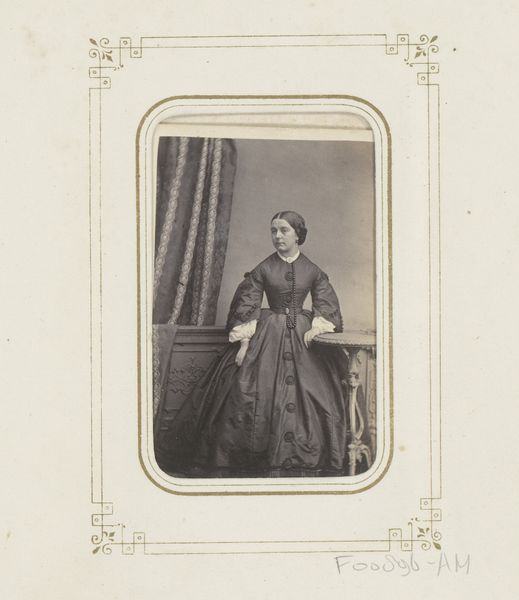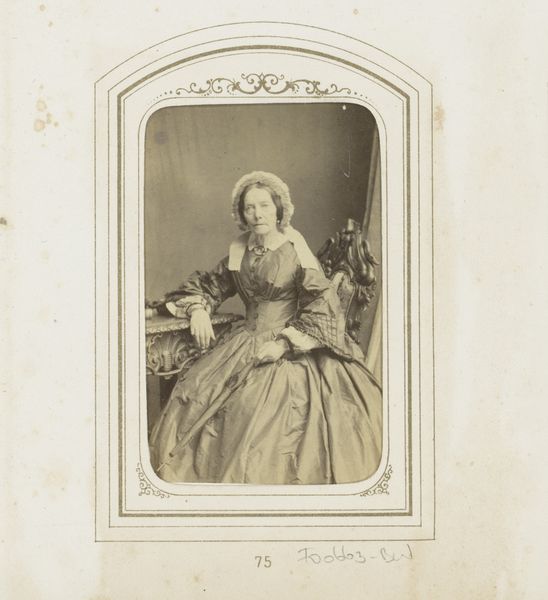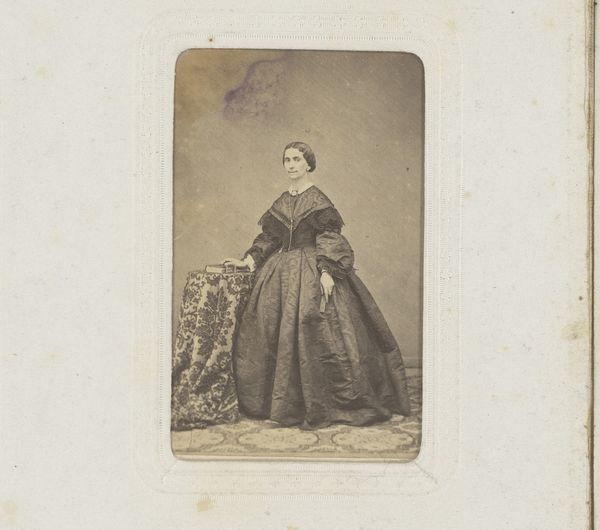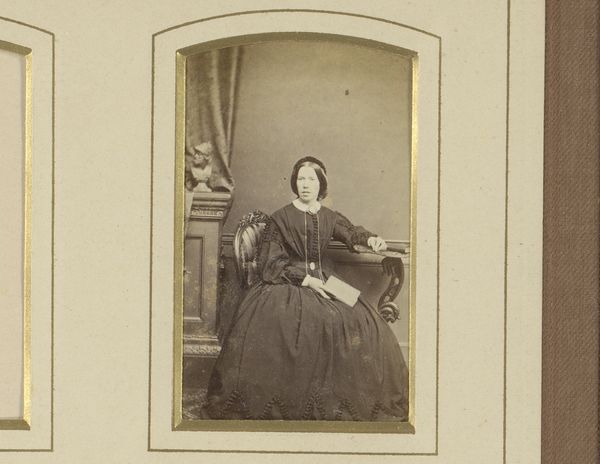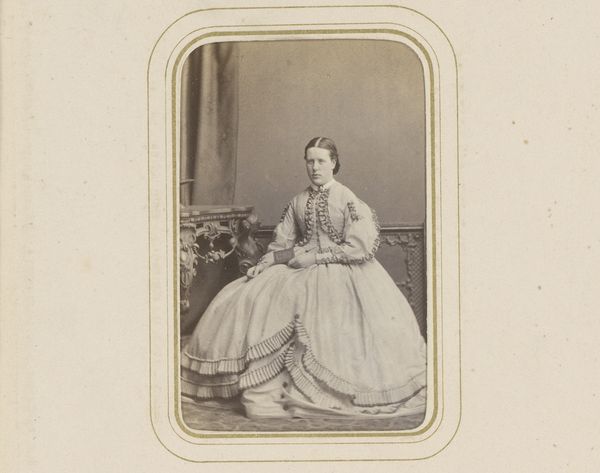
photography
#
portrait
#
photography
#
19th century
Dimensions: height 82 mm, width 50 mm
Copyright: Rijks Museum: Open Domain
Curator: Here we see Charles Binger’s photographic portrait, "Portret van een zittende vrouw met muts," created sometime between 1862 and 1869. It's currently housed here at the Rijksmuseum. Editor: Immediately, I notice a certain stillness. The monochrome palette focuses our attention on form—the meticulous detail in her dress and head covering, and the sitter's composed posture. The whole piece possesses a subdued, almost melancholic quality, don't you think? Curator: The melancholic mood makes me think about the broader social context in which Binger was operating, namely the growing, burgeoning middle class of 19th-century Holland who now, through the developments of photographic technology, had affordable access to portraiture, and its self-representation and circulation. It democratizes traditional forms. Editor: I’d argue that beyond the social context, the composition draws the eye upwards, toward the subject's face framed by that striking bonnet. Semiotically, the hat becomes almost like a halo that leads the eye straight to her demure expression. Her direct gaze confronts the viewer. Curator: And I would offer that her expression and demure nature were affected by long exposure times, but, beyond that, it’s impossible to miss that the photographic emulsion isn’t perfect; this image is marred by light imperfections on its surface. That fact, plus the fading that’s occurred over a century of storage, are evidence of material transformation. Its very physical reality tells a story. Editor: I agree it is far from visually perfect, yet its imperfections become integral to the artistic character. The soft greys and faded details amplify a delicate structure in tones that adds to the wistful, evocative character. Curator: Looking closer makes me think about the physical process—the labor involved in crafting the image, from setting up the shot to the darkroom processing, as photography was still emerging as both artistic pursuit and form of labor. This isn’t merely a representation; it’s a constructed artifact, the product of human endeavor in a specific time. Editor: Precisely. So much conveyed through its unique aesthetic. Curator: It all invites speculation about both the labor and personhood it depicts.
Comments
No comments
Be the first to comment and join the conversation on the ultimate creative platform.
